Featured Articles
The Beast of Stillman's Gym, Part 5…TOLEDO
 Holyoke Valley Arena, 1940s
Holyoke Valley Arena, 1940s
PART 5: IN THE MADHOUSE
The uneven borders of Holyoke, Massachusetts appear on a map as a near-perfect fist with the middle finger sticking up.
Abandoned factories and textile mills looming over man-made canals remind locals that their city was once an industrial giant. Their city now has nearly three times as much violent crime as the national average and its median household income is only about half the state average. Irish Catholics built Holyoke though only 17% of their descendents are left. Over 44% of the folks today are Hispanic; still Catholic, still tough. Old mill towns seem to insist on both.
The Great Depression sent the mills spiraling into bankruptcy. That left working men with idle hands and a lot of testosterone looking for something to do. Boxing was big in Holyoke, even during the lean years -–especially during the lean years. On Monday nights, roughneck fathers would take roughneck sons over to the Valley Arena on South Bridge Street. It was an education. Monday night was fight night.
The arena was originally a gas house until Homer Rainault converted it in 1926. It was rebuilt after two fires in ’43 and ’52 and lasted until 1960 when it went up in flames so high they licked the sky. The Rainaults put on boxing shows popular enough –-and at 40 cents a ticket, cheap enough to warm 2,000 seats on the floor and two balconies. Golden era fighters would come in by way of New York and take a room over Kelly’s Lobster House, which was only a five-minute walk from the arena.
THE SMOKE
Holyoke knew Cocoa Kid well. He had made a career storming around the continental United States and stopped off at the Valley Arena nineteen times. His first appearance was on September 19th 1932. He “made a hit,” according to the Holyoke Transcript-Telegram and “proved himself a superior boxer with a stinging left and nasty right hook.” His last appearance was on March 25th 1946. It was Bert Lytell who made a hit that night. Cocoa Kid made a target.
Bert hammered the sentimental favorite, knocking him down twice; a left hook in the third sat him down in the middle of the ring for a nine-count and then a right in the fourth sent him flying for another nine-count. Fans were “amazed,” said the Transcript-Telegram, “as Lytell weaved in front of him, protruded his chin and dared him to swing.” It was “the worst shellacking” of his long career though his pride never let him flinch from it. Bert knew that this reeling figure, his former mentor at Stillman’s Gym, was once as fast as he was and mercifully slowed down. Spectators closest to the action said that he seemed to be pulling his punches at the end.
Four months later Bert flew down to Puerto Rico with Tiny Patterson and defeated him again on his native soil. In July 1947, the pair met for the third time in New Orleans. Battered into semi-consciousness, Cocoa Kid was saved from himself by his corner before round seven. It was an act of mercy cheered by the thousands in attendance.
THE MECHANIC
By the summer of 1945 it had been almost a decade since Holman Williams and Cocoa Kid first swapped leather. Williams was outmaneuvered over thirteen engagements, but had just defeated the aging phenomenon in May. Charley Burley was Williams’ other great rival. Those two fought for the seventh and last time in July, and Williams won. A long-termer in the madhouse that was Murderers’ Row, Williams would eventually meet every member a total of 36 times. He was also one of history’s great road warriors: Between August 1944 and August 1945 he fought 17 times in seven states and chalked up a travel estimate of 22,196 miles.
Williams may have wondered about this fighter that old-timers were calling the second coming of Tiger Flowers. As he measured him from across the Coliseum ring he may have noted a stronger resemblance to Battling Siki. The young man’s arms extended well past his robe’s sleeves and his jaw looked like something salvaged from a scrap heap and attached with a dog bone wrench.
Oddsmakers in “The Big Easy” made Williams a slight favorite over Bert Lytell despite the reports that he had big problems with southpaws. This one proved to be the toughest he ever met. The affair was described as torrid, with Bert burning up the ring and maximizing confusion by boxing at long range. Williams stopped digging in his own toolbox and reached for Jake LaMotta’s: “Equalize the fight by keeping on top [of him] because then you don’t know the difference between a southpaw and a right-handed fighter,” LaMotta said, “that’s how you make it even.” And that is precisely what happened. Williams took over on the inside and fought him to a draw.
Bert said he was nursing a fever. A twelve-round rematch was set for two weeks later and he was feeling mean. “Williams is such a local favorite that he is allowed to get away with unfair tricks. The surest way is to knock him out, or at least down several times. That’s what I am going to do Friday night,” he snarled to the Times-Picayune, “I’m going after him and unless I beat him decisively or knock him out I don’t want the decision.”
For seven rounds, he got mean all right. Holman was “almost hopelessly beaten” as Bert crowded him and concentrated his attack on the body. Pete Baird was ringside and saw strategy forming even then –-Holman, he surmised, “figured that sooner or later Lytell would weaken from the fast pace he was setting.” The eighth round was the turning point. As Bert started to sputter, Williams had a light bulb moment and starting throwing left hooks to his ribs. These allowed him to slip under Bert’s right hands and debilitate what was left of him at the same time. With William’s cheering section ringing in his ears, Bert barely survived the last two rounds and lost the referee’s decision.
The beast fled north to lick his wounds. He returned to Holyoke to outclass a triple champion from Cuba before heading to Baltimore to face another member of Murderers’ Row. Aaron “Tiger” Wade was treated to both faces of Bert Lytell –-one “constantly on the move” and the other tattooed to his chest. This time the referee voted in Bert’s favor, though the two judges at ringside gave the duke to Wade. The Baltimore Sun reported that Wade “failed to live up to his nickname” and “won by the barest whisker.”
Madison Square Garden sponsored Williams-Lytell III in Valley Arena. Williams was guaranteed $2,000 for the fight. Modest though it was for a professional of his caliber, the matchmaker claimed that it was “the biggest pay-off to any single fighter by the arena in 12, yes, 15 or even more years.” Williams had earned a decent purse. Since their last battle, he had rallied and climbed to the number-two spot in the rankings. The local press souped things up by referring to him as “the uncrowned king of the middleweights” and charging that Sugar Ray Robinson, LaMotta, and middleweight champion Tony Zale were avoiding him.
The truth was he had over 150 professional fights by then and his body was breaking down.
He entered the ring a 2½ to 1 favorite with a weight advantage of six pounds. But Bert was on a rampage. Williams was assailed from three ranges, outboxed as well as outpunched. He could do nothing to fend off the southpaw; even the lug wrench that used to be his right hand was in pieces. Before the bell to begin the eighth round Bert was seen bounding up and down in his corner. This victory would launch him up the middleweight ladder. “He beat me in New Orleans,” he said in the dressing room afterwards, “yes he beat me fairly and squarely, but I wanted to win that one tonight.”
Williams was practically wheezing when the time came to declare the winner of the 1-1-1 series in 1947. It was a main event at Pelican Stadium in New Orleans, “an all-Negro July 4 ring show” with seats reserved for white fans and a brass band playing at intermission. Bert intended to retire his rival. “Those who saw what he did to Cocoa Kid,” said the Times-Picayune “realize Holman is in for it.” They weren’t wrong. At the end of the fourth, Williams misjudged a hook whistling in from the wrong angle and crashed to the canvas. As the referee reached the count of “nine” the bell rang. Williams was still lying there “out cold, flat on his back” when his seconds came rushing out to help him to his corner and revive him. Only a second-to-none skill set pulled him through the next eight rounds.
Before the verdict was announced, Williams walked over to Bert and lifted his glove.
“THE KING OF ‘EM ALL”
Charley Burley was at the peak of his powers in August 1946. He was the second-ranked middleweight in the world and probably could have thrashed the sitting champion and the first contender. When he met Bert in Millvale, Pennsylvania, the Pittsburgh Post-Gazette quipped that Burley would not only have to take on a “formidable foe,” he would also “be forced to come up with a defense for a woman’s wiles.” Tiny Patterson was there and heads were turning when that short and shapely frame swiveled by.
Bert forced the action while Burley seemed distracted, content to counterpunch and peck at a cut that opened under the southpaw’s right eye. When Bert surged in the fourth and tenth rounds, Burley slowed him down with a debilitating hook to the stomach. The fight was anything but dramatic. One newspaper began its coverage with a cry of “Ho-hum!”
Bobby Lippi, a friend of Burley, claimed that there was plenty of drama before and after the bout. He said that they were playing cards the night before and every half hour the phone would ring. When Burley picked up the receiver, he was abused by whoever was on the other end. They suspected these calls came from someone in the Lytell camp. Lippi also claimed that Bert absorbed a beating that the press somehow missed, that he showered after the bout, got dressed, and sat shell-shocked on a bench with “no idea where he was.”
After the loss to Burley, Bert would have six more fights before the year was out, four of them against light heavyweights who outweighed him by ten pounds. His first bout in 1947 was against a light heavyweight who outweighed him by eleven pounds. That was easy –-The Ring Record Book missed his last bout in 1946 where Sammy Aaronson said he took on half the police precinct in Brooklyn. The Holyoke Transcript-Telegram corroborated Aaronson’s story when it mentioned “some fine embroidery on his scalp” and described it as a “criss-cross” scar that Bert suffered after “a dance hall melee.”
A middleweight who requires a riot squad to subdue him and beats up light heavyweights for fun was tough enough for Willie Schulkin of The Boxing News to dare Burley to fight him again. Burley, the so-called “king of ‘em all,” accepted the challenge.
Lytell-Burley II was held the same night Curtis “Hatchet Man” Sheppard met Jimmy Bivins at Philadelphia. Both bouts were important ones: Sheppard was being considered to challenge for Joe Louis’s crown while Burley was penciled in for a shot at Gus Lesnevich’s light heavyweight crown. Several weeks earlier, Burley contracted pleurisy and the original date of the rematch was rescheduled so that he could recover; whether or not that was a factor in the rematch is anyone’s guess. Either way, Bert staggered Burley twice in the early rounds and was “pushing him all over the Coliseum ring” while the crowd sat in stunned silence.
After getting even with the most dangerous member of Murderers’ Row, Bert returned to the garage on King’s Highway in Brooklyn where he used to work –-and bought it.
____________________________
The Row was willing, but champions weren’t and Bert Lytell was beginning to feel like the ugly girl at the dance. More idols totter as our man is forced to find larger prey in PART 6 OF “THE BEAST OF STILLMAN’S GYM.”
The graphic of the Holyoke Valley Arena appears with courtesy of imagemuseum.smugmug.com.
Information regarding Holyoke and the Valley Arena found in city-data.com, creatingholyoke.org, and Boxrec Boxing Encyclopedia. “The Smoke”: Reading Eagle 2/11/46, Holyoke Transcript-Telegram, 9/20/32, 3/21,25,26,27/46 and 4/9/46, Times-Picayune 5/19/47; Passenger manifest, Pan American Airways, inc, 8/1/46 San Juan to NYC; “The Mechanic”: Miami News 4/27/46, Times-Picayune 8/16, 17, 18/45; 7/4,5/47, Holyoke Transcript-Telegram 4/13,16/45; “Tiger Wade”: Baltimore Sun 10/1,2,3/45. “The King of ‘Em All”: Daily Times 8/3/46, contracts pleurisy, AP 7/17/46, The Sun 2/17,18/47, Boxrec encyclopedia, and Harry Otty’s Charley Burley and the Black Murderers’ Row, p. 275, 277-8. Lytell’s purchase of King’s Highway Garage is mentioned in The Berkshire Evening Eagle, 9/4/1947.
Springs Toledo can be contacted at scalinatella@hotmail.com“>scalinatella@hotmail.com.
-
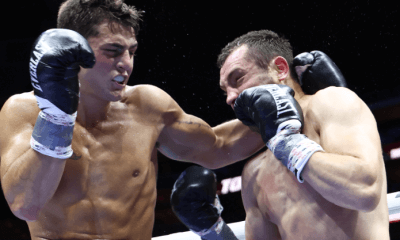
 Featured Articles3 weeks ago
Featured Articles3 weeks agoVito Mielnicki Jr Whitewashes Kamil Gardzielik Before the Home Folks in Newark
-
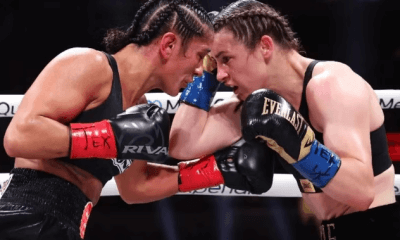
 Featured Articles4 days ago
Featured Articles4 days agoResults and Recaps from New York Where Taylor Edged Serrano Once Again
-
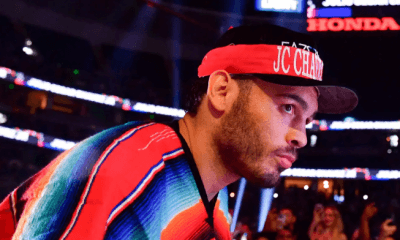
 Featured Articles1 week ago
Featured Articles1 week agoFrom a Sympathetic Figure to a Pariah: The Travails of Julio Cesar Chavez Jr
-

 Featured Articles3 days ago
Featured Articles3 days agoResults and Recaps from NYC where Hamzah Sheeraz was Spectacular
-
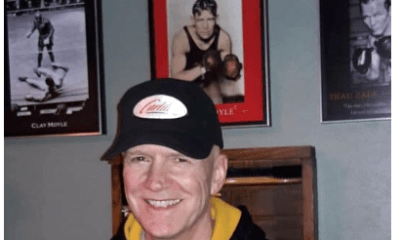
 Featured Articles4 weeks ago
Featured Articles4 weeks agoCatching Up with Clay Moyle Who Talks About His Massive Collection of Boxing Books
-
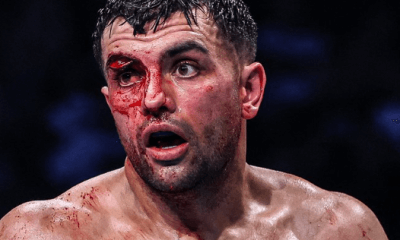
 Featured Articles1 week ago
Featured Articles1 week agoCatterall vs Eubank Ends Prematurely; Catterall Wins a Technical Decision
-
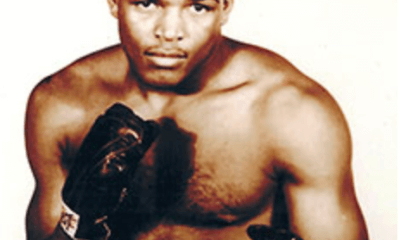
 Featured Articles4 days ago
Featured Articles4 days agoPhiladelphia Welterweight Gil Turner, a Phenom, Now Rests in an Unmarked Grave
-
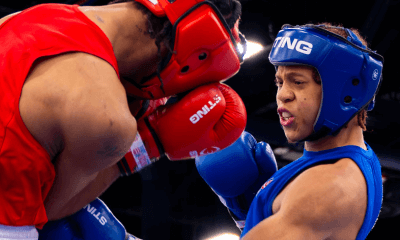
 Featured Articles3 weeks ago
Featured Articles3 weeks agoMore Medals for Hawaii’s Patricio Family at the USA Boxing Summer Festival

















